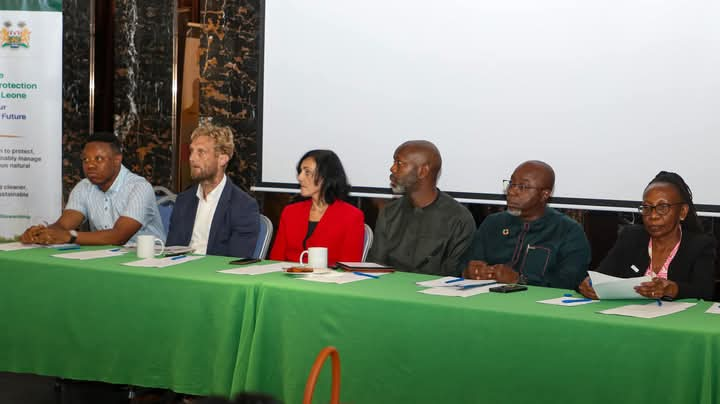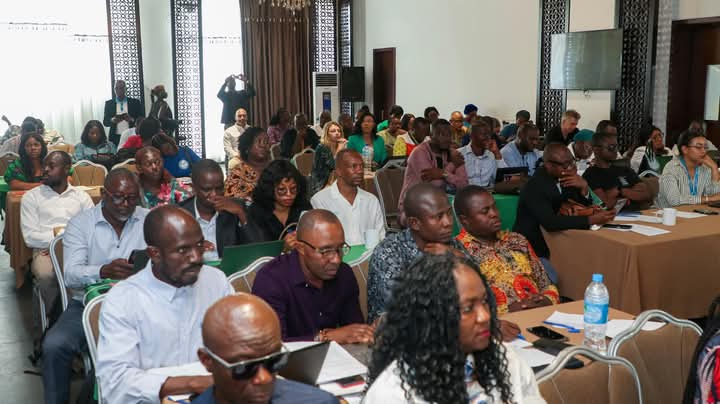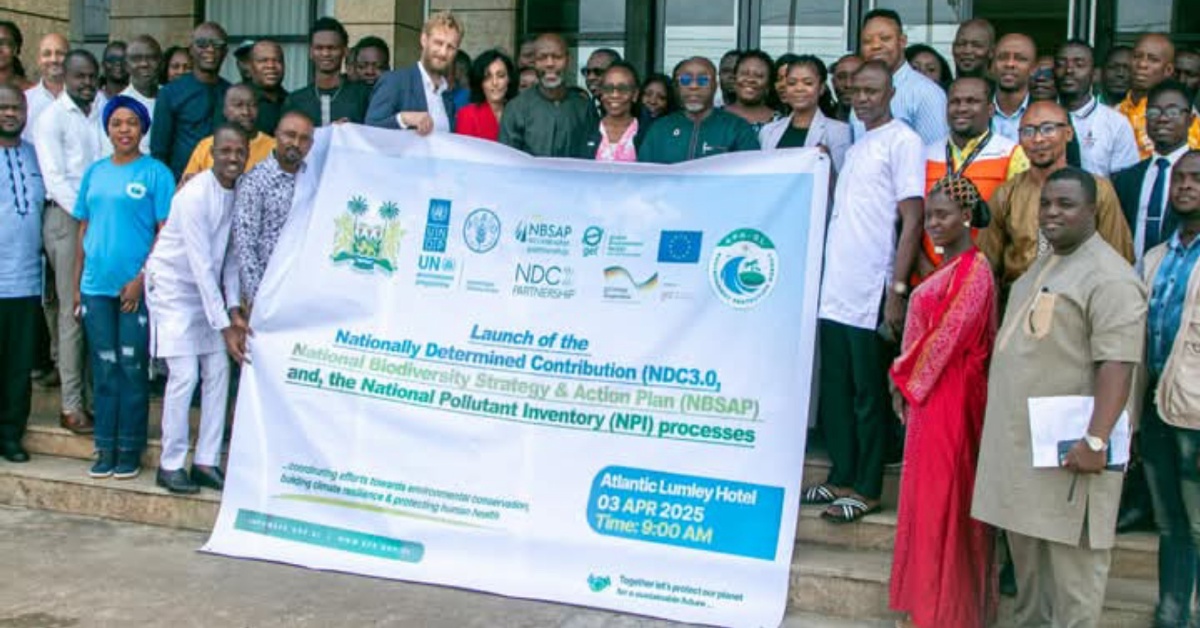The Environment Protection Agency Sierra Leone on Thursday 3rd April 2025 launched the Nationally Determined Contributions (NDC 3. 0), the National Biodiversity Strategy and Action Plan (NBSAP), and the National Pollutant Inventory (NPI) Development Processes at the Atlantic Lumley Hotel in Freetown.
The event was attended by relevant ministries, departments, agencies, development partners, the media, civil society groups, academics, and other stakeholders.
In his welcome address, Executive Chairman, Dr Abu-Bakar S. Massaquoi referred to the three documents as premium passports that would spotlight the country’s role in the global fight against the triple planetary crisis. He further stated that all three documents will reveal whether we are reactive or decisive in addressing the highlighted challenges and achieving the objectives.
“We must ensure the success of these documents to strengthen partnerships and coalitions and define the country’s character in climate and biodiversity initiatives”, he stated.
In his keynote address, Minister of Environment and Climate Change, Jiwoh Emmanuel Abdulai, emphasised the importance of data in informing policy coherence and enforcement, fulfilling our international obligations under Multilateral Environmental Agreements (MEAs), and the urgent need to engage in the fight against the triple planetary crisis.

He continued by stating that it is a comprehensive process that must reflect reality since it will serve as a negotiation instrument to achieve our duties and goals.
Speakers on behalf of development partners, including the United Nations Development Programme Sierra Leone, GIZ, the Food and Agriculture Organisation, the NDC Partnership, the European Union, PI- CREF, and the United Nations Framework Convention on Climate Change reaffirmed their commitment to collaborating on impactful actions, including restoring degraded landscapes and tackling waste and pollution for the benefit of people and the planet.
The agency’s senior technical staff presented technical outlines detailing the document’s objectives, institutional framework, timelines, technical working group composition and terms of reference, monitoring mechanisms and assessments, and target stakeholders.

The ceremony concluded with
recommendations on the development of the documents and a photo opportunity.



 Post a comment
Post a comment 









